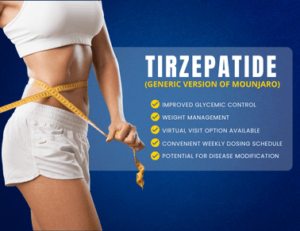The medicine for type 2 diabetes called Ozempic is, without a doubt, Novo Nordisk‘s (NYSE: NVO) knight in shining armor. Thanks to an impressive amount of demand and the company’s dedicated efforts in exploring other conditions that the medicine could potentially treat, there looks to be an abundance of upside remaining for investors.
A chunk of that possible upside just got one big step closer to being made real. Here’s why the investment opportunity is even more bullish than it was before.
This key market is now within reach
Chronic kidney disease (CKD) entails a progressive loss of kidney functionality that eventually becomes so severe that it causes heart problems, among many other issues. According to Maximize Market Research, the market for CKD medicines will grow to reach a size of $19.2 billion by 2030.
In the context of patients with type 2 diabetes who also have CKD, the risk of cardiovascular events is especially elevated. So, if there were a medicine that was known to be helpful in treating type 2 diabetes and reducing cardiovascular risks which was also proven to be helpful in treating CKD, it would fill a complex medical need and likely find a decent market.
Novo Nordisk wouldn’t be the only competitor in that market, but it would likely be able to secure a sizable market share if it could make a tailored solution for specific pathologies, symptoms, or comorbidities of particular concern. Per the results of a phase 3 clinical trial published in the prestigious New England Journal of Medicine on May 24, Ozempic is that drug.
Among the 1,767 high-risk patients in the trial who received semaglutide, the active ingredient of Ozempic, the risk of experiencing a major kidney disease event was 24% lower than in those who were given a placebo. Those events included kidney failure, needing a kidney transplant, starting dialysis, or experiencing a large drop in the kidney’s rate of filtration. Their risk of major cardiovascular events like heart attacks was also 18% lower than that of the patients who got the placebo. Furthermore, their pace of progressive kidney dysfunction decreased sharply.
The study took measurements from participants for a total of 3.4 years. That’s long enough to determine whether semaglutide was capable of maintaining its beneficial effects, and also long enough to determine if patients could actually tolerate taking the medication on a permanent basis. The icing on the cake is that even in that relatively long period, fewer patients in the treatment group experienced serious adverse events than those taking the placebo. The takeaway is that these are pretty good results.
All of that means the probability of Novo Nordisk getting regulators at the U.S. Food and Drug Administration (FDA) to agree to add CKD to Ozempic’s list of approved indications is very high. Likewise, the probability of clinicians subsequently being keen to treat their high-risk patients with both CKD and type 2 diabetes using semaglutide is also high, as it’ll treat a slew of core pathologies and reduce a handful of serious risk factors all in one stroke.
Don’t expect this stock to get cheaper soon
This latest news is bullish for Novo Nordisk, and it is far from being the first or second time that such a bullish development has happened for sales of Ozempic specifically. In 2023, the company’s obesity and diabetes care segment, which includes Ozempic and its sibling medicines Rybelsus and Wegovy, was responsible for $31.2 billion in sales, up 52% from a year prior.
It is hard to see how that sum would not continue to rise throughout the rest of this year, as sales are presently constrained by how much of these drugs can be manufactured. Beyond that, it will take some time before it assembles the paperwork necessary to get the FDA on board with using semaglutide to treat CKD.
But the new study still grants Novo a longer revenue growth runway with semaglutide than before — and it was already quite long. There are also plenty of other late-stage clinical trials seeking to expand semaglutide’s approved indications even further. Some of those programs are for cardiometabolic indications, but others are for conditions like Alzheimer’s disease. Breaking into those other markets could occur within the next five years.
All this information contributes to the investment thesis for this stock. Given the other promising developments related to semaglutide as well as the drug’s obvious huge success, it’s reasonable to buy more Novo Nordisk. While there are always risks associated with mass-scale rollout of relatively new medicines, so far there isn’t much evidence that semaglutide could have trouble waiting in the wings, and thus it could well be a star performer for years.
Should you invest $1,000 in Novo Nordisk right now?
Before you buy stock in Novo Nordisk, consider this:
The Motley Fool Stock Advisor analyst team just identified what they believe are the 10 best stocks for investors to buy now… and Novo Nordisk wasn’t one of them. The 10 stocks that made the cut could produce monster returns in the coming years.
Consider when Nvidia made this list on April 15, 2005… if you invested $1,000 at the time of our recommendation, you’d have $713,416!*
Stock Advisor provides investors with an easy-to-follow blueprint for success, including guidance on building a portfolio, regular updates from analysts, and two new stock picks each month. The Stock Advisor service has more than quadrupled the return of S&P 500 since 2002*.
*Stock Advisor returns as of June 3, 2024
Alex Carchidi has no position in any of the stocks mentioned. The Motley Fool recommends Novo Nordisk. The Motley Fool has a disclosure policy.
Ozempic Just Got Even More Bullish For Novo Nordisk Stock, Yet Again was originally published by The Motley Fool








